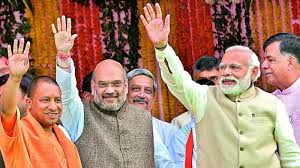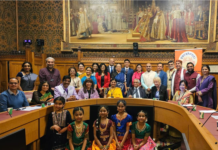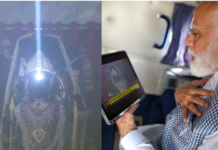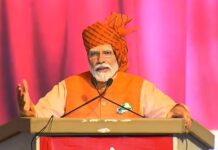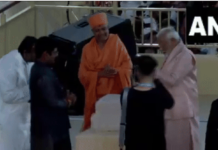NEW DELHI: The Bharatiya Janata Party’s (BJP) rise over the past 38 years has been stellar. The party was officially created on April 6, 1980. It emerged from the Jana Sangh, which was formed in 1951 by Shyama Prasad Mookerjee. The Jana Sangh merged with some other parties to form the Janata Party in 1977, after the Emergency imposed by then Congress Prime Minister Indira Gandhi. The Janata Party dissolved in 1980 and its members formed the BJP with Vajpayee as its first president.
Vajpayee moderated the Hindu nationalist stance to gain a wide appeal. The party’s dismal performance in the 1984 general elections, however, led to a a shift in ideology towards a more hardline notion of Hindutva.
HOW IT’S FARED IN THE LOK SABHA
The BJP won a landslide majority in the 2014 general elections, winning 282 seats in the Lok Sabha. With the next elections scheduled for 2019, BJP tacticians know that the magnitude of victory in 2014 may be difficult to replicate. In a bid to get re-elected, the party is likely to focus on its three core strengths – a leader, an ideology and a cadre.
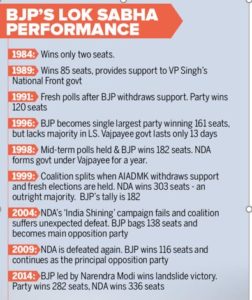
LONGEST SERVING CMs: BJP VS THE REST
The top spots go to CPM leader Jyoti Basu, who held the office for two more than two decades from 1977 to 2000 and Pawan Kumar Chamling, CM of Sikkim since 1994 and president of the Sikkim Democratic Front. Left leader Manik Sarkar also served as Tripura CM for four consecutive terms — from March 1998 to March 2018, stepping down recently after the party lost to the BJP-IPFT alliance.
Others who have held the post for long periods are Gegong Apang, who was Arunachal Pradesh CM from 1980 to 1999 and then again from 2003 to 2007, as well as Lal Thanhawla (Congress) who has been Mizoram CM since December 2008. Previously he was CM from 1984 to 1986 and then from 1989 to 1998.
For the BJP, the mantle of the longest-serving CM goes to Narendra Modi, who before becoming the prime minister was the chief minister of Gujarat from 2001 to 2014. He’s followed by Raman Singh in Chhattisgarh (since 2003) and Shivraj Singh Chouhan (since 2005) — both are currently at the helm of their respective states. Elections in Madhya Pradesh and Chhattisgarh later this year will be a test of their leadership.
WORLD’S LARGEST PARTY
The BJP has built up its primary membership to about 100 million as of April 2015, according to Wikipedia, a number that would have increased in the last three years. Prior to 2015, the Communist Party of China was considered the largest party in the world.
The swelling numbers are in large measure due to a unique initiative spearheaded by Amit Shah called the“missed call” campaign. Launched in 2014, a person can become a member of the party by giving a missed call on a specific toll-free number. New members have to send their personal details, including address and profession.
Skeptics, however, say the groundswell in membership is not a reliable reflection of the party’s actual strength on the ground, and that while PM Modi’s popularity and the party’s current influence may draw thousands into the fold, their loyalty will remain suspect.
The saffron party has another record it can stake claim to. Its new headquarters on Deen Dayal Upadhyay Marg in New Delhi, spread over 1.70 lakh square feet, is bigger than the office of any political party worldwide, according to Amit Shah.
CURRENT REPRESENTATION IN LS
The BJP is the country’s largest political party in terms of representation in Parliament and state assemblies.
The party currently has chief ministers in 15 states — Arunachal Pradesh, Assam (with Asom Gana Parishad and Bodoland People’s Front), Chhattisgarh, Goa (with Goa Forward Party and Maharashtrawadi Gomantak Party), Gujarat, Haryana, Himachal Pradesh, Jharkhand (with All Jharkhand Students Union), Madhya Pradesh, Maharashtra (with Shiv Sena), Manipur (with Naga People’s Front, National People’s Party and Lok Janshakti Party), Rajasthan, Tripura (with Indigenous People’s Front of Tripura), Uttar Pradesh and Uttarakhand.
The saffron party shares power with other political parties in five states, In these states it is a junior ally – Bihar (with Janata Dal (United), Lok Janshakti Party, Rashtriya Lok Samta Party), Jammu & Kashmir (with Jammu and Kashmir Peoples Democratic Party and Jammu and Kashmir People’s Conference), Meghalaya (with National People’s Party, United Democratic Party, People’s Democratic Front and Hill State People’s Democratic Party), Nagaland (with Nationalist Democratic Progressive Party, Janata Dal (United) and National People’s Party) and Sikkim (with Sikkim Democratic Front).
The BJP has a number of alliances with regional parties under the NDA umbrella (mentioned above).However,the saffron party has testing relationships with several of them. The Shiv Sena is its oldest ally — since 1995 when the two parties shared power in Maharashtra. The relationship is, however, on way to being severed with the Sena already announcing it will not have a truck with the BJP for the 2019 Lok Sabha polls

Readers like you, make ESHADOOT work possible. We need your support to deliver quality and positive news about India and Indian diaspora - and to keep it open for everyone. Your support is essential to continue our efforts. Every contribution, however big or small, is so valuable for our future.

